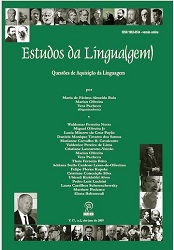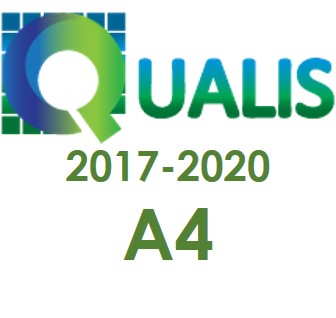Un análisis de la influencia interlingüística global y local en el aprendizaje de español como L3, por hablantes de mandarín como L1 e inglés como L2
DOI:
https://doi.org/10.22481/el.v17i2.5346Palabras clave:
Adquisición de L3; Fonética L3; Mandarín; español; influencia interlingüística.Resumen
El presente estudio investigó la influencia fonética interlingüística (CLI) en hablantes de mandarín como L1, inglés como L2 y español como L3. El objetivo fue determinar si la L1 o la L2 eran una fuente más fuerte de CL1en hablantes trilingües de tres lenguas tipológicamente distintas e investigar hasta qué punto el dominio de L2 y L3 tiene un papel en el aprendizaje. Para ello, se realizaron dos análisis. En el análisis general, oyentes hispanohablantes (N = 22) escucharon producciones leídas por hablantes de mandarín como L1, de inglés como L2 y de español como L3 (N = 17) con diferentes niveles de dominio de la L2 y de la L3, e intentaron identificar el idioma nativo de los individuos. En el análisis local, se observaron solamente las producciones de la L3 para determinar si la L1 o la L2 fue una fuente más frecuente de transferencia. Los dos análisis revelaron que tanto la L1 como la L2 fueron posibles fuentes de transferencia, aunque la L1 haya sido una fuente más fuerte en general. El dominio oral de L2 y L3 no fue un factor significativo, lo que revela que otros factores pueden ser mejores predictores de la fuente de transferencia. Se discuten esos hallazgos a partir de su compatibilidad con el Modelo de Primacía Tipológica y el Modelo del Status de L2 como factor.
Descargas
Citas
BARDEL, C; FALK, Y. The L2 status factor and the declarative/procedural distinction. In J. Cabrelli Amaro, S. Flynn, & J. Rothman (Eds.), Third Language Acquisition in Adulthood (pp. 61-78). Amsterdam, NL: John Benjamins, 2012.
BLANK, C. A; ZIMMER, M.C. A transferência fonético-fonológica L2 (francês)-L3 (inglês): Um estudo de caso [Phonetic-phonological transfer in L2 (French)-L3 (English): A case study]. Revista de Estudos da Linguagem 17, 207–33, 2009.
CABRELLI AMARO, J; WREMBEL, M. Investigating the acquisition of phonology in a third language – a state of the science and an outlook for the future. International Journal of Multilingualism, 13(4), 395-409, 2016.
CHANG, S-E. Degree and direction of foreign accent in L2 and L3 Korean speech. In The Scottish Consortium for ICPhS 2015 (Ed.), Proceedings of the 18th International Congress of Phonetic Sciences. Glasgow, UK: The University of Glasgow, 2015.
CORTÉS MORENO, M. Dificultades lingüísticas de los estudiantes chinos en el aprendizaje del ELE. Carabela, 52, 77-98, 2002.
CORTÉS MORENO, M. Dificultades lingüísticas del español para los estudiantes sinohablantes y búsqueda de soluciones motivadoras [Linguistic difficulties of Spanish for Chinese speaking students and a search for motivating solutions]. SinoELE, 10, 173-208, 2014
DUANMU, S. The Phonology of Standard Chinese. Oxford, UK: Oxford University Press, 2000.
DUANMU, S. The phonology of standard Chinese. Oxford, UK: Oxford University Press, 2007.
FLYNN, S; FOLEY, C; Vinnitskaya, I. (2004). The cumulative-enhancement model for language acquisition: Comparing adults' and children's patterns of development in first, second and third language acquisition of relative clauses. International Journal of Multilingualism, 1(1), 3-16, 2004.
GABRIEL, C; KUPISCH, T; SEOUDY, J. VOT in French as a foreign language: A production and perception study with mono-and multilingual learners (German/Mandarin-Chinese). In NEVEU, F. G ET AL (Eds.), SHS Web of Conferences (Vol. 27). Les Ulis, FR: EDP Sciences, 20016
HAMMARBERG, B; HAMMARBERG, B. Re-setting the basis of articulation in the acquisition of new languages: A third language case study. In HAMMARBERG, B. (Ed.), Processes in third language acquisition (pp. 74-85). Edinburgh, UK: Edinburgh University Press, 2005.
HUALDE, J. I. The sounds of Spanish. Cambridge, UK: Cambridge University Press, 2005.
KOPEČKOVÁ, R. Crosslinguistic influence in Instructed L3 child phonological acquisition. In PAWLAK, M; ARONIN, L. (Eds.), Essential Topics in Applied Linguistics and Multilingualism (pp. 205–24). Cham: Springer International Publishing, 2014.
LADEFOGED, P; MADDIESON, I. (1996). The sounds of the world's languages. Oxford, UK: Blackwell Publishers, 1996.
LEE, W. S. An articulatory and acoustical analysis of the syllable-initial sibilants and approximants in Beijing Mandarin. In OHALA, J. J. Y. ET AL (Eds.), Proceedings of the International Congress on Phonetic Sciences 1999 (pp. 413-416). San Francisco, CA: The Regents of the University of California.
LLAMA, R; CARDOSO, W. Revisiting (Non-) Native Influence in VOT Production: Insights from Advanced L3 Spanish. Languages, 3(3), 30, 2018.
LLAMA, R; CARDOSO, W; COLLINS, L. The influence of language distance and language status on the acquisition of L3 phonology. International Journal of Multilingualism, 7(1), 39-57, 2010.
Llama, R; López-Morelos, L. P. VOT production by Spanish heritage speakers in a trilingual context. International Journal of Multilingualism, 13(4), 444-458, 2016.
LLOYD-SMITH, A; GYLLSTAD, H; KUPISCH, T. Transfer into L3 English. Global accent in German-dominant heritage speakers of Turkish. Linguistic Approaches to Bilingualism, 7(2), 131-162, 2017.
PATIENCE, M. (2018). Acquisition of the Tap-Trill Contrast by L1 Mandarin–L2 English–L3 Spanish Speakers. Languages, 3(4), 1-34, 2018.
PUIG-MAYENCO, E; GONZÁLEZ Alonso, J; ROTHMAN, J. A systematic review of transfer studies in third language acquisition. Second Language Research, 1-34, 2018.
PYUN, KS. A model of interlanguage analysis – The case of Swedish by Korean speakers. In B. HUFEISEN, B; FOUSER, R (Eds.), Introductory Readings in L3 (pp. 55-70). Tubingen, DE: Stauffenberg, 2005.
QIN, Z; JONGMAN, A. Does second language experience modulate perception of tones in a third language? Language and Speech, 59(3), 318-338, 2016.
SYPIAŃSKA, J. Multilingual acquisition of vowels in L1 Polish, L2 Danish and L3 English. International Journal of Multilingualism, 13(4), 476-495, 2016.
ROTHMAN, J. L3 syntactic transfer selectivity and typological determinacy: The typological primacy model. Second Language Research, 27(1), 107-127, 2011.
ROTHMAN, J. (2015) Linguistic and cognitive motivations for the typological primacy model of third language (L3) transfer: Considering the role of timing of acquisition and proficiency in the previous languages. Bilingualism: Language and Cognition, 18(2), 179-190, 2015.
SOLÉ, M. J. Aerodynamic characteristics of trills and phonological patterning. Journal of Phonetics, 30(4), 655-688, 2002.
TREMBLAY, M-C. L2 influence on L3 pronunciation: Native-like VOT in the L3 Japanese of English-French bilinguals. Paper presented at the Satellite Workshop of ICPhS XVI, Freiburg, Germany, August 3–4, 2007.
WREMBEL, M. L2-accented speech in L3 production. International Journal of Multilingualism, 7(1), 75-90, 2010.
WREMBEL M. Foreign accentedness in Third Language Acquisition; the case of L3 English. In CABRELLI AMARO, J; Flynn, S; Rothman, J (Eds.) Third Language Acquisition in Adulthood (p. 281-309). Amsterdam, NL: John Benjamins, 2012.
WREMBEL, M. Foreign accent ratings in third language acquisition; the case of L3 French. In KLIRNCZAK, E. W; SHOCKEY, L. R. (Eds.), Teaching and Researching English Accents in Native and Non-native Speakers (pp. 29-45). Berlin, DE: Springer Verlag, 2013.
WREMBEL, M. (2014). VOT patterns in the acquisition of third language phonology. Concordia Working Papers in Applied Linguistics, v. 5, p. 750-770, 2014
WREMBEL, M. In search of a new perspective: Cross-linguistic influence in the acquisition of third language phonology. Poznań, PL: Wydawnictwo Naukowe UAM, 2015.
Descargas
Publicado
Cómo citar
Número
Sección
Licencia

Estudos da Língua(gem) está bajo una Licencia Creative Commons Atribución 4.0 Internacional.
Los autores que publican en el periódico Estudios de la Lengua (g) concuerdan con los siguientes términos:
La revista Estudios del Lenguaje mantiene los derechos de autor de las contribuciones publicadas. Estos derechos incluyen la publicación de la contribución y pondrá a disposición su contenido gratuitamente a través del portal







